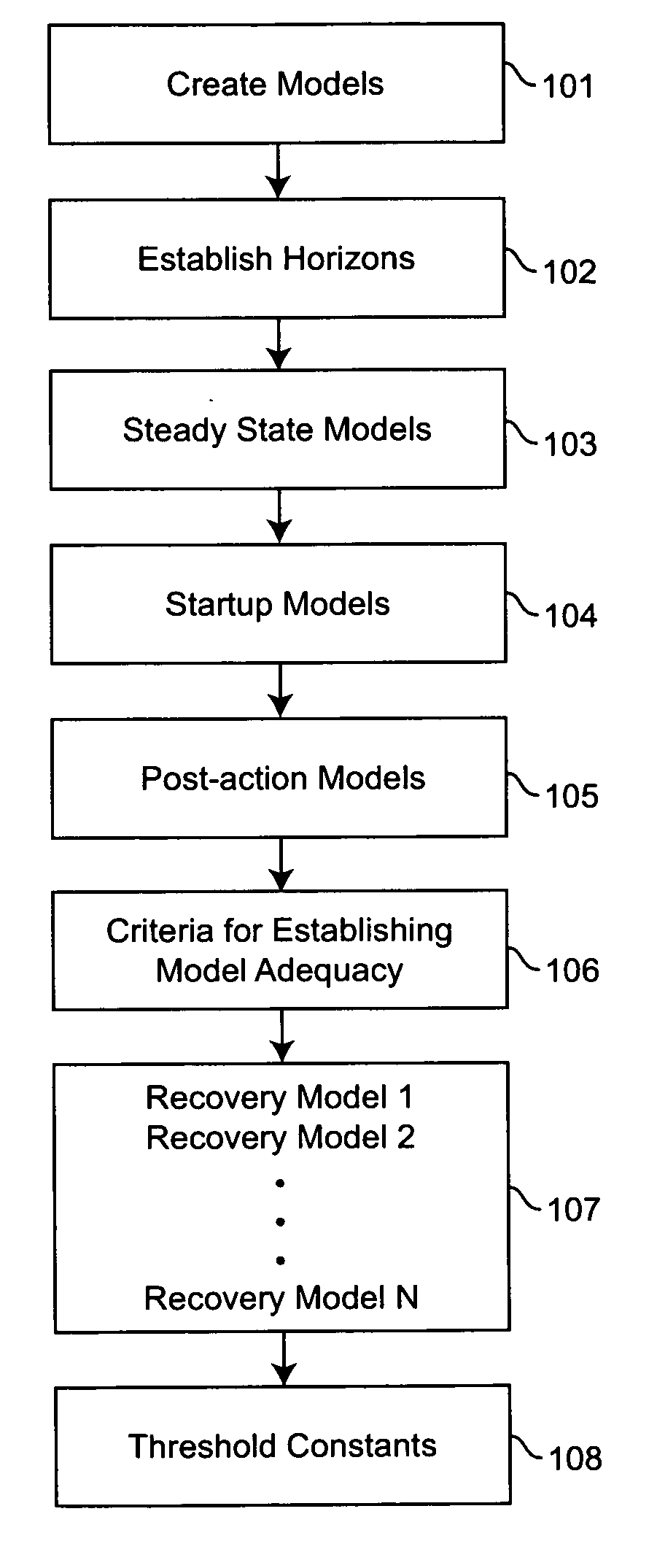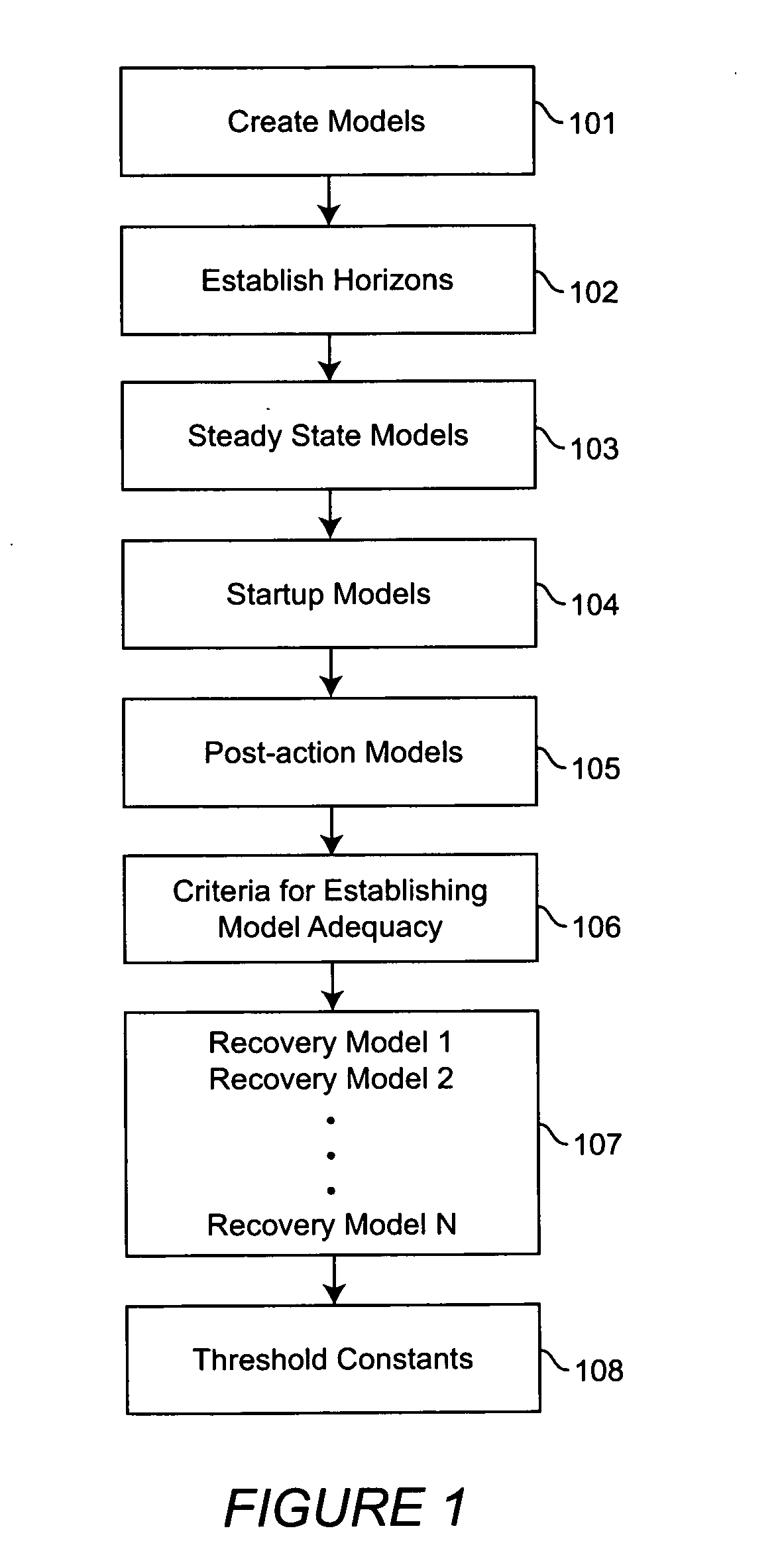System and method of predicting future behavior of a battery of end-to-end probes to anticipate and prevent computer network performance degradation
a technology of end-to-end probes and prediction methods, applied in the direction of instruments, data switching networks, digital transmission, etc., can solve the problems of inability to predict the future behavior of end-to-end probes, inability to predict the reliability and availability of reported components, and inability to implement probing or predictive statistical modeling
- Summary
- Abstract
- Description
- Claims
- Application Information
AI Technical Summary
Benefits of technology
Problems solved by technology
Method used
Image
Examples
Embodiment Construction
[0042] Referring now to the drawings, and more particularly to FIG. 1, there is shown a flow chart for design of a predictive model. In module 101 there are created the statistical models (derived by using GAM's) that connect the EPP characteristics and the predictors. Module 102 establishes the prediction horizons for various EPP probes. This requires coordination with module 101, so as to make sure that the horizons are realistic (i.e., the model is capable of predicting for this horizon). In module 103 the Steady State models are derived: these are full scale models that use historic data so as to maximize predictive capability; it is assumed that the relevant data could be obtained from any depth in history. Module 104 deals with the derivation of Startup models: these are used when the amount of historic information is limited. For example, because of a server re-start 0.5 hours ago, the historic server data that is more than 0.5 hours old is considered irrelevant and is not pe...
PUM
 Login to View More
Login to View More Abstract
Description
Claims
Application Information
 Login to View More
Login to View More - R&D
- Intellectual Property
- Life Sciences
- Materials
- Tech Scout
- Unparalleled Data Quality
- Higher Quality Content
- 60% Fewer Hallucinations
Browse by: Latest US Patents, China's latest patents, Technical Efficacy Thesaurus, Application Domain, Technology Topic, Popular Technical Reports.
© 2025 PatSnap. All rights reserved.Legal|Privacy policy|Modern Slavery Act Transparency Statement|Sitemap|About US| Contact US: help@patsnap.com



